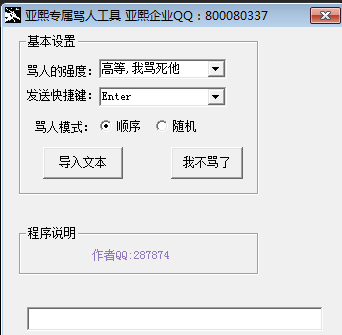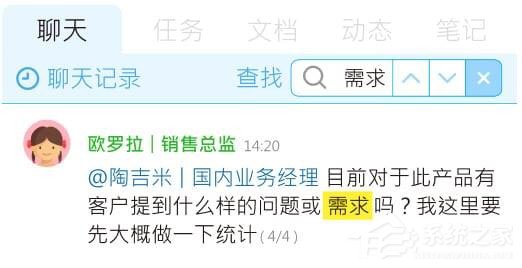Python 计数器:如何使用 collections.Counter?
时间:2023-05-08 16:04
一个计数器工具提供快速和方便的计数,Counter是一个dict的子类,用于计数可哈希对象。它是一个集合,元素像字典键(key)一样存储,它们的计数存储为值。计数可以是任何整数值,包括0和负数,Counter类有点像其他语言中的bags或multisets。简单说,就是可以统计计数,来几个例子看看就清楚了。 元素从一个iterable 被计数或从其他的mapping (or counter)初始化: 1.1 对列表/字符串作用 下面是两种使用方法,一种是直接使用,一种是实例化以后使用,如果要频繁调用的话,显然后一种更简洁 ,因为可以方便地调用Counter内的各种方法,对于其他可迭代序列也是一样的套路。 1.2 输出结果 1.3 用自带的items()方法输出 显然这个方法比转换为字典后再输出的方法更为方便: 利用most_common()方法,返回一个列表,其中包含n个最常见的元素及出现次数,按常见程度由高到低排序。 如果 n 被省略或为None,most_common() 将返回计数器中的所有元素,计数值相等的元素按首次出现的顺序排序,经常用来计算top词频的词语: 描述:返回一个迭代器,其中每个元素将重复出现计数值所指定次。 元素会按首次出现的顺序返回。 如果一个元素的计数值小于1,elements() 将会忽略它。 官方文档例子: 从迭代对象或映射对象减去元素,输入和输出都可以是0或者负数。 这里的计数可以减到零一下,可以包含零和负数: 通常字典方法都可用于Counter对象,除了有两个方法工作方式与字典并不相同。 fromkeys(iterable):这个类方法没有在Counter中实现。 update([iterable-or-mapping]):从迭代对象计数元素或者从另一个映射对象 (或计数器) 添加,元素个数是加上。另外迭代对象应该是序列元素,而不是一个 (key, value) 对。 这个功能非常强大,提供了几个数学操作,可以结合 Counter 对象,以生产 multisets (计数器中大于0的元素)。 加和减,结合计数器,通过加上或者减去元素的相应计数。交集和并集返回相应计数的最小或最大值。每种操作都可以接受带符号的计数,但是输出会忽略掉结果为零或者小于零的计数。 与”和“或”操作: 单目加和减(一元操作符)意思是从空计数器加或者减去,相当于给计数值乘以正值或负值,同样输出会忽略掉结果为零或者小于零的计数: 写一个计算文本相似的算法,加权相似: Counter是一个dict子类,主要是用来对你访问的对象的频率进行计数。 常用方法: elements():返回一个迭代器,每个元素重复计算的个数,如果一个元素的计数小于1,就会被忽略。 most_common([n]):返回一个列表,提供n个访问频率最高的元素和计数 subtract([iterable-or-mapping]):从迭代对象中减去元素,输入输出可以是0或者负数,不同于减号 - 的作用 update([iterable-or-mapping]):从迭代对象计数元素或者从另一个 映射对象 (或计数器) 添加。 举例: 常用的方法: 以上就是Python 计数器:如何使用 collections.Counter?的详细内容,更多请关注Gxl网其它相关文章!一. 介绍
举例:#计算top10的单词from collections import Counterimport retext = 'remove an existing key one level down remove an existing key one level down'words = re.findall(r'w+', text)Counter(words).most_common(10)[('remove', 2),('an', 2),('existing', 2),('key', 2),('one', 2)('level', 2),('down', 2)] #计算列表中单词的个数cnt = Counter()for word in ['red', 'blue', 'red', 'green', 'blue', 'blue']: cnt[word] += 1cntCounter({'red': 2, 'blue': 3, 'green': 1})#上述这样计算有点嘛,下面的方法更简单,直接计算就行L = ['red', 'blue', 'red', 'green', 'blue', 'blue'] Counter(L)Counter({'red': 2, 'blue': 3, 'green': 1}from collections import Counter#字符串计数Counter('gallahad') Counter({'g': 1, 'a': 3, 'l': 2, 'h': 1, 'd': 1})#字典计数Counter({'red': 4, 'blue': 2}) Counter({'red': 4, 'blue': 2})#计数Counter(cats=4, dogs=8)Counter({'cats': 4, 'dogs': 8})Counter(['red', 'blue', 'red', 'green', 'blue', 'blue'])Counter({'red': 2, 'blue': 3, 'green': 1})二. 基本操作
1. 统计“可迭代序列”中每个元素的出现的次数
#首先引入该方法from collections import Counter#对列表作用list_01 = [1,9,9,5,0,8,0,9] #GNZ48-陈珂生日print(Counter(list_01)) #Counter({9: 3, 0: 2, 1: 1, 5: 1, 8: 1}) #对字符串作用temp = Counter('abcdeabcdabcaba')print(temp) #Counter({'a': 5, 'b': 4, 'c': 3, 'd': 2, 'e': 1})#以上其实是两种使用方法,一种是直接用,一种是实例化以后使用,如果要频繁调用的话,显然后一种更简洁#查看类型print( type(temp) ) #<class 'collections.Counter'> #转换为字典后输出print( dict(temp) ) #{'b': 4, 'a': 5, 'c': 3, 'd': 2, 'e': 1} for num,count in enumerate(dict(temp).items()): print(count)"""('e', 1)('c', 3)('a', 5)('b', 4)('d', 2)"""print(temp.items()) #dict_items([('e', 1), ('c', 3), ('b', 4), ('d', 2), ('a', 5)]) for item in temp.items(): print(item)"""('a', 5)('c', 3)('d', 2)('e', 1)('b', 4)"""2. most_common()统计出现次数最多的元素
#求序列中出现次数最多的元素 from collections import Counter list_01 = [1,9,9,5,0,8,0,9]temp = Counter(list_01) #统计出现次数最多的一个元素print(temp.most_common(1)) #[(9, 3)] 元素“9”出现3次。print(temp.most_common(2)) #[(9, 3), (0, 2)] 统计出现次数最多个两个元素 #没有指定个数,就列出全部print(temp.most_common()) #[(9, 3), (0, 2), (1, 1), (5, 1), (8, 1)]
Counter('abracadabra').most_common(3)[('a', 5), ('b', 2), ('r', 2)]Counter('abracadabra').most_common(5)[('a', 5), ('b', 2), ('r', 2), ('c', 1), ('d', 1)]3. elements() 和 sort()方法
举例:c = Counter(a=4, b=2, c=0, d=-2)list(c.elements())['a', 'a', 'a', 'a', 'b', 'b']sorted(c.elements())['a', 'a', 'a', 'a', 'b', 'b']c = Counter(a=4, b=2, c=0, d=5)list(c.elements())['a', 'a', 'a', 'a', 'b', 'b', 'd', 'd', 'd', 'd', 'd']
from collections import Counter c = Counter('ABCABCCC')print(c.elements()) #<itertools.chain object at 0x0000027D94126860> #尝试转换为listprint(list(c.elements())) #['A', 'A', 'C', 'C', 'C', 'C', 'B', 'B'] #或者这种方式print(sorted(c.elements())) #['A', 'A', 'B', 'B', 'C', 'C', 'C', 'C'] #这里与sorted的作用是: list all unique elements,列出所有唯一元素#例如print( sorted(c) ) #['A', 'B', 'C']# Knuth's example for prime factors of 1836: 2**2 * 3**3 * 17**1prime_factors = Counter({2: 2, 3: 3, 17: 1})product = 1for factor in prime_factors.elements(): # loop over factors product *= factor # and multiply themprint(product) #1836#1836 = 2*2*3*3*3*174. subtract()减操作:输出不会忽略掉结果为零或者小于零的计数
c = Counter(a=4, b=2, c=0, d=-2)d = Counter(a=1, b=2, c=3, d=4)c.subtract(d)cCounter({'a': 3, 'b': 0, 'c': -3, 'd': -6})#减去一个abcdstr0 = Counter('aabbccdde')str0Counter({'a': 2, 'b': 2, 'c': 2, 'd': 2, 'e': 1})str0.subtract('abcd')str0Counter({'a': 1, 'b': 1, 'c': 1, 'd': 1, 'e': 1}subtract_test01 = Counter("AAB")subtract_test01.subtract("BCC")print(subtract_test01) #Counter({'A': 2, 'B': 0, 'C': -2})subtract_test02 = Counter("which")subtract_test02.subtract("witch") #从另一个迭代序列中减去元素subtract_test02.subtract(Counter("watch")) #^…… #查看结果print( subtract_test02["h"] ) # 0 ,whirch 中两个,减去witch中一个,减去watch中一个,剩0个print( subtract_test02["w"] ) #-15. 字典方法
sum(c.values()) # total of all countsc.clear() # reset all countslist(c) # list unique elementsset(c) # convert to a setdict(c) # convert to a regular dictionaryc.items() # convert to a list of (elem, cnt) pairsCounter(dict(list_of_pairs)) # convert from a list of (elem, cnt) pairsc.most_common(n) # n least common elements+c # remove zero and negative counts
6. 数学操作
c = Counter(a=3, b=1)d = Counter(a=1, b=2)c + d # add two counters together: c[x] + d[x]Counter({'a': 4, 'b': 3})c - d # subtract (keeping only positive counts)Counter({'a': 2})c & d # intersection: min(c[x], d[x]) Counter({'a': 1, 'b': 1})c | d # union: max(c[x], d[x])Counter({'a': 3, 'b': 2})print(Counter('AAB') + Counter('BCC'))#Counter({'B': 2, 'C': 2, 'A': 2})print(Counter("AAB")-Counter("BCC"))#Counter({'A': 2})print(Counter('AAB') & Counter('BBCC'))#Counter({'B': 1}) print(Counter('AAB') | Counter('BBCC'))#Counter({'A': 2, 'C': 2, 'B': 2})c = Counter(a=2, b=-4)+cCounter({'a': 2})-cCounter({'b': 4})def str_sim(str_0,str_1,topn): topn = int(topn) collect0 = Counter(dict(Counter(str_0).most_common(topn))) collect1 = Counter(dict(Counter(str_1).most_common(topn))) jiao = collect0 & collect1 bing = collect0 | collect1 sim = float(sum(jiao.values()))/float(sum(bing.values())) return(sim) str_0 = '定位手机定位汽车定位GPS定位人定位位置查询' str_1 = '导航定位手机定位汽车定位GPS定位人定位位置查询' str_sim(str_0,str_1,5) 0.75
7. 计算元素总数、Keys() 和 Values()
from collections import Counter c = Counter('ABCABCCC')print(sum(c.values())) # 8 total of all counts print(c.keys()) #dict_keys(['A', 'B', 'C'])print(c.values()) #dict_values([2, 2, 4])8. 查询单元素结果
from collections import Counterc = Counter('ABBCC')#查询具体某个元素的个数print(c["A"]) #19. 添加
for elem in 'ADD': # update counts from an iterabl c[elem] += 1print(c.most_common()) #[('C', 2), ('D', 2), ('A', 2), ('B', 2)]#可以看出“A”增加了一个,新增了两个“D”10. 删除(del)
del c["D"]print(c.most_common()) #[('C', 2), ('A', 2), ('B', 2)]del c["C"]print(c.most_common()) #[('A', 2), ('B', 2)]11. 更新 update()
d = Counter("CCDD")c.update(d)print(c.most_common()) #[('B', 2), ('A', 2), ('C', 2), ('D', 2)]12. 清除 clear()
c.clear()print(c) #Counter()
三. 总结
# 统计字符出现的次数>>> import collections>>> collections.Counter('hello world')Counter({'l': 3, 'o': 2, 'h': 1, 'e': 1, ' ': 1, 'w': 1, 'r': 1, 'd': 1})# 统计单词数>>> collections.Counter('hello world hello world hello nihao'.split())Counter({'hello': 3, 'world': 2, 'nihao': 1})>>> c = collections.Counter('hello world hello world hello nihao'.split())>>> cCounter({'hello': 3, 'world': 2, 'nihao': 1})# 获取指定对象的访问次数,也可以使用get()方法>>> c['hello']3>>> c = collections.Counter('hello world hello world hello nihao'.split())# 查看元素>>> list(c.elements())['hello', 'hello', 'hello', 'world', 'world', 'nihao']# 追加对象,或者使用c.update(d)>>> c = collections.Counter('hello world hello world hello nihao'.split())>>> d = collections.Counter('hello world'.split())>>> cCounter({'hello': 3, 'world': 2, 'nihao': 1})>>> dCounter({'hello': 1, 'world': 1})>>> c + dCounter({'hello': 4, 'world': 3, 'nihao': 1})# 减少对象,或者使用c.subtract(d)>>> c - dCounter({'hello': 2, 'world': 1, 'nihao': 1})# 清除>>> c.clear()>>> cCounter()



























